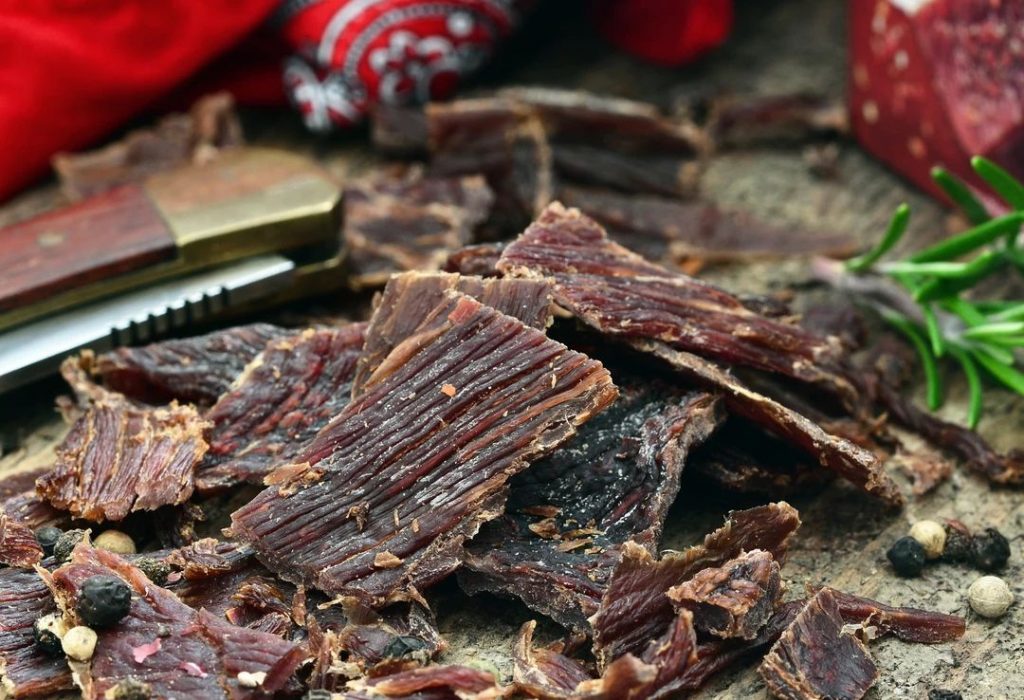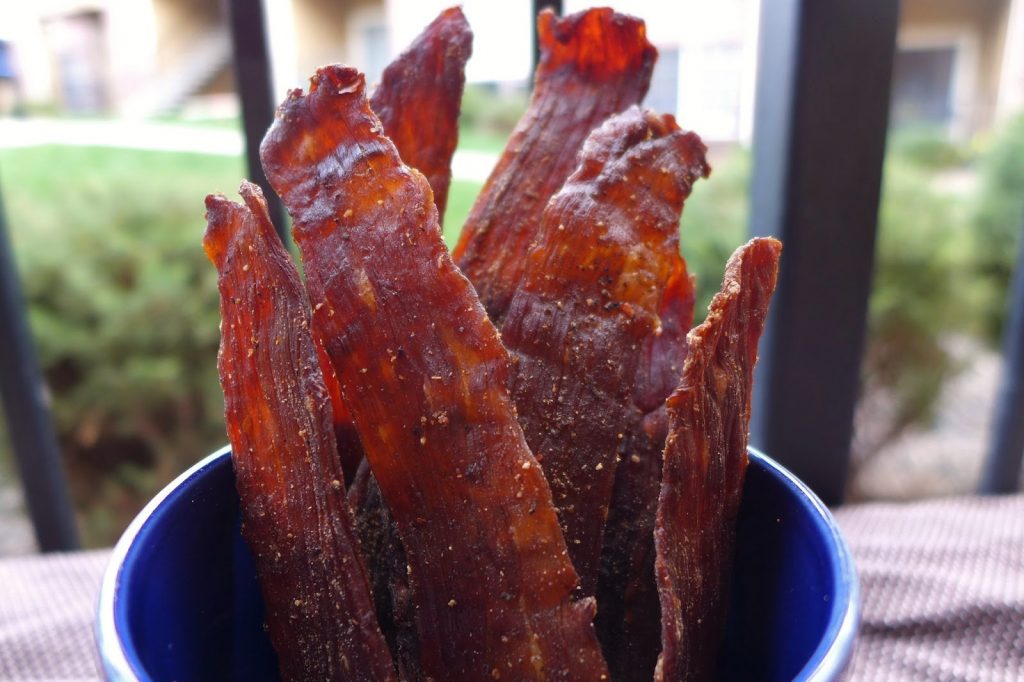Making salty meat or jerky in the wild is an excellent way to store high-protein food for longer. The salt kills the bacteria of the meat and allows it to stay in a good edible condition for weeks.
If you want to make dry meat in the wild, you should know how to make a smoker. The smoker should be a smaller version of a wickiup, covered with resistant fabric or pine boughs.
Nevertheless, let us see how to make jerky in the wild and why it is good to have dried meat supplies while in the woods.

How to Make Jerky in the Wild
To make jerky in the wild, you should have a piece of low-fat meat, salt, a sharp knife, a smoker, and a storage box.
First, you should cut the meat into thin strips, then treat it with salt, and lastly, place it in the smoker to dry out. Salt kills bacteria and prolongs the meat’s due date. Moreover, the meat becomes dehydrated and lightweight.
Another good thing about making jerky in the wild is that the salt makes this meat last longer, even without refrigeration.
Therefore, since you do not have a refrigerator in the wild, making and storing food resistant to external conditions is best.
The drying process preserves the meat from bacteria and dehydrates it, making the dried strips multiple times lighter than in their rare condition. Therefore, you can make around 4 ounces of fresh meat from one pound of jerky.
The best meat to make jerky in the wild is beef, but you can go with any other kind of meat of your choice.
You can go with pork, venison, lamb, and even fish. It is essential to go with lean meat because jerky may turn rancid quickly.
Jerky Preparation Tips
Slice the meat
You must have a sharp knife in your survival kit if you are in the wild. The sharp knife is the first essential tool you should carry since it can do a lot of work.
Get the piece of fresh meat you have, whether you carried it with you or haunted it in the wild. Choose a lean piece of meat and slowly cut thin stripes. Remove fat, if any.
It is best to cut the meat between ⅛ or ¼ inch in thickness. If you wonder which direction to slice the meat, decide how you would like the meat texture to be, chewy or soft.
Cutting the meat against the grain will make it chewier (direction of the meat muscle fibers). However, it will be softer and less chewy if you slice it against the grain.
Moreover, you may use the direction of the muscle fibers to determine whether the meat is well-done, medium, or rarely cooked.
Read more: How to Smoke Meat in the Wild

Choose specific wood
Making jerky in the wild was a specialty of cowboys. They knew how to prepare jerky so well that they mastered the best wood types for smoking the meat.
Each type of wood gives different smoke and flavor to the dried meat. Hickory wood gives rich, deep flavor, while apple wood makes the jerky mildly flavored with a fruity scent.
Among the best wood types for drying jerky, we can mention cherry wood. This wood makes any meat sweet-flavored and mild.
Also, a good alternative is mesquite wood, one of the hottest burning woods, which gives a strong earthy flavor.
Somewhere between apple, cherry, and mesquite wood is oak wood. It gives medium flavor, more intense than the fruit woods, but not as intense as the mesquite wood.
Walnut wood has a strong flavor and might make your meat bitter. It is a tricky option that is best to avoid if you are not so good at smoking meat.
Season it
If you have a mini seasoning kit in your backpack, it might be best to use it on the jerky. Combined with the right wood and seasoning, the jerky might get a new flavor dimension.
If you have no seasoning, you can choose wild berries, herbs, and minced roasted nuts, depending on what the surrounding has to offer.
However, never forget the salt. It is the main and most important “seasoning” you should use to make jerky.
Salt is an antimicrobial ingredient that can kill many bacteria and protect the meat from future bacteria during the drying process.
Dry and smoke
Making jerky is not easy. The process might take up to seven or eight hours. This is because the meat dries at low temperatures, something like 120°F or 170°F.
It goes easy and slow, and you have to be patient until the meat completely dries out. You can check the meat for a few hours and add salt if you prefer saltier food.
You begin drying by putting the meat at 140°F or 60°C. Keep this temperature for one hour and ensure there is only heat and no smoke. Turn the meat over every 30 minutes to prevent it from sticking.
Increase the temperature to 160°F and smoke the meat for three hours. Then, raise it to 180°F and continue drying without smoke for three hours.
To determine the fire’s temperature, do the hand test. Keep the hand about 5 inches above the fire cooking grate. If you can keep it for eight to ten seconds, the heat is low and around 200°F.
If you can keep it for longer than ten seconds, it is below 200°F. So, this was the last tip on how to make jerky in the wild.
Also read: How to Purify Salt Water in the Wild
Conclusion
I hope these tips have helped you learn how to make jerky in the wild. Everything is in the details, so keep in mind to learn as much as you can.
Stay safe and sharpen your bushcraft skills!
